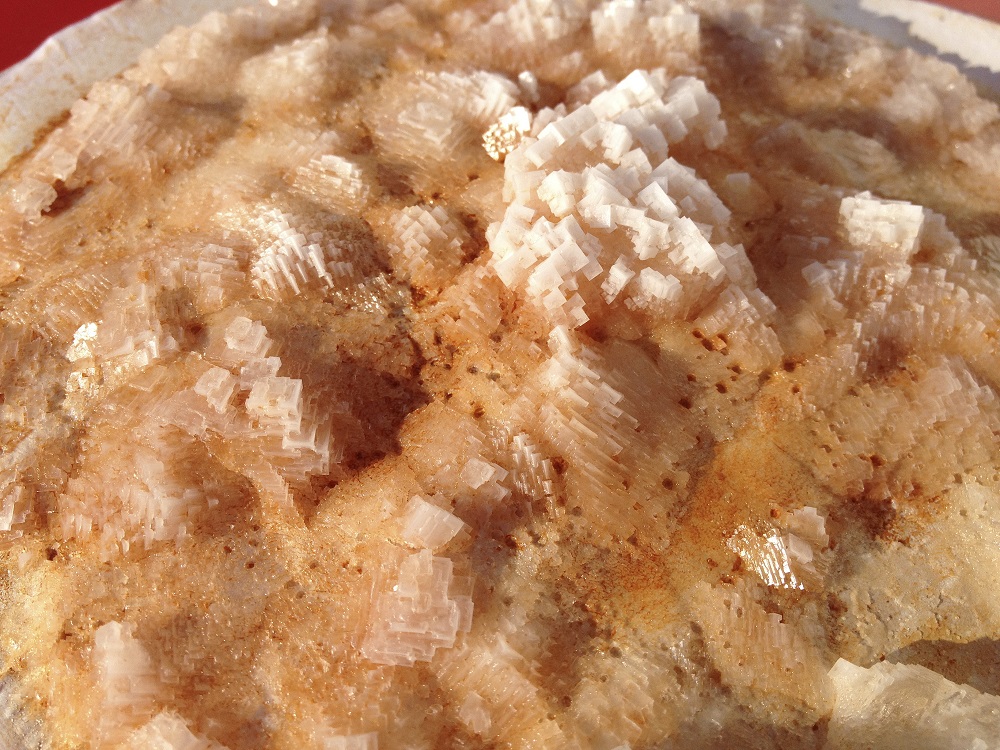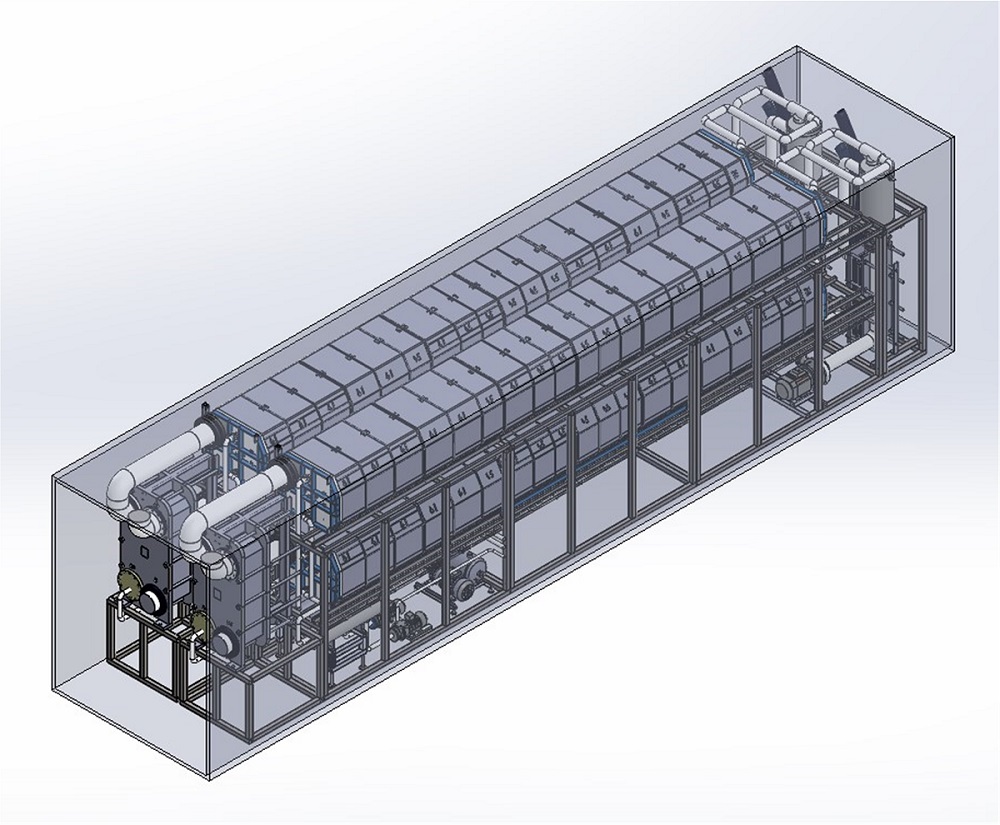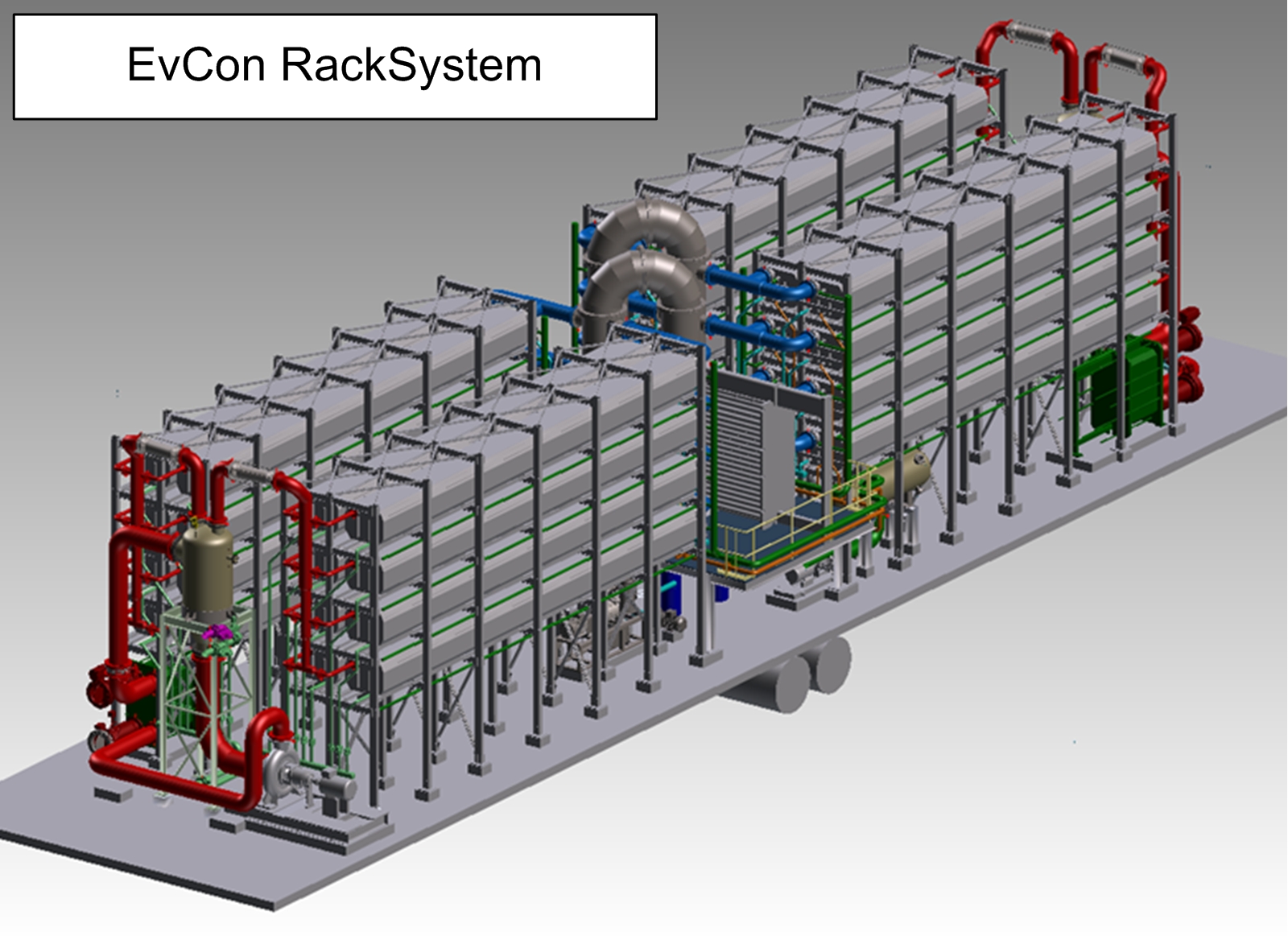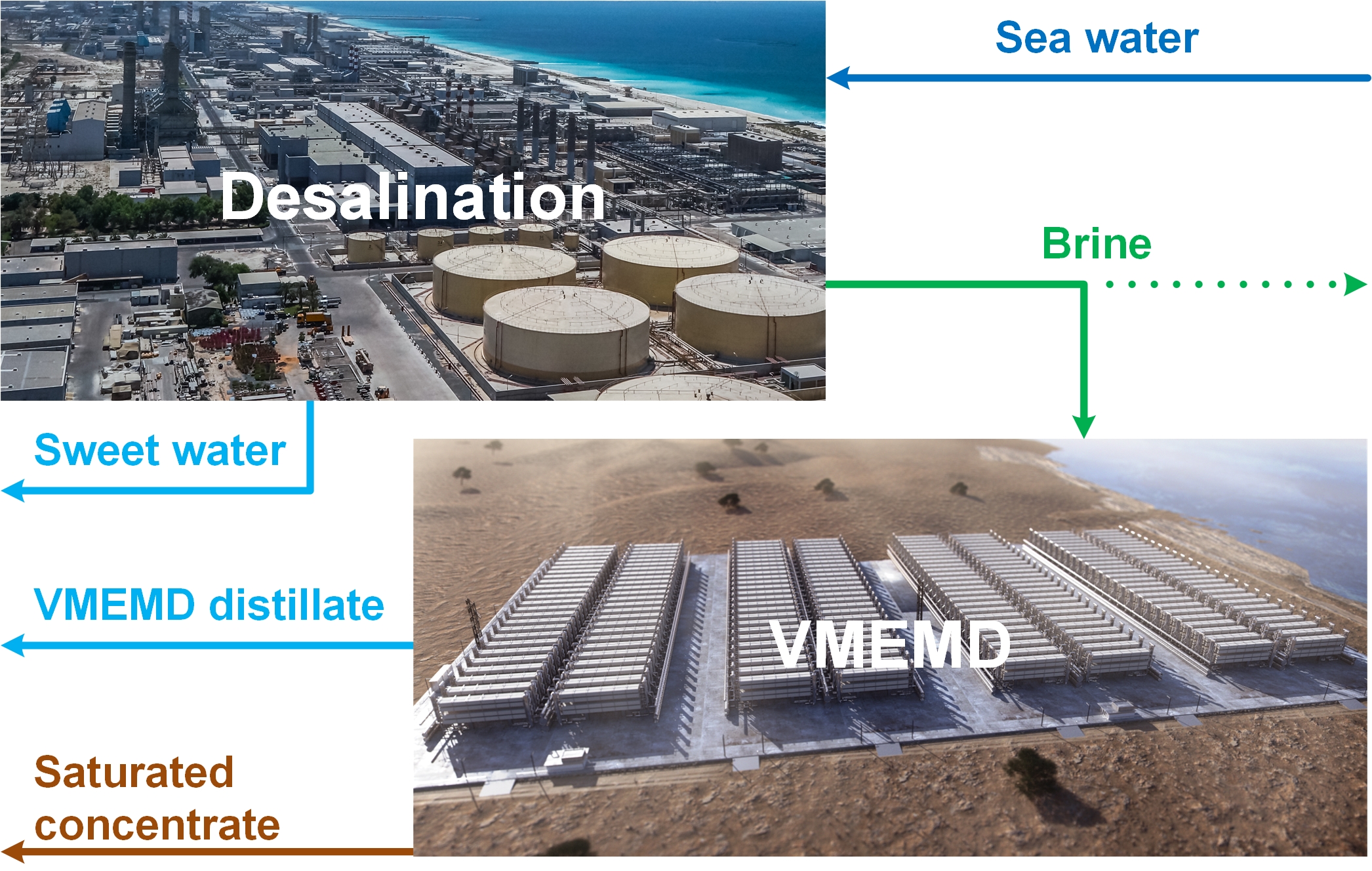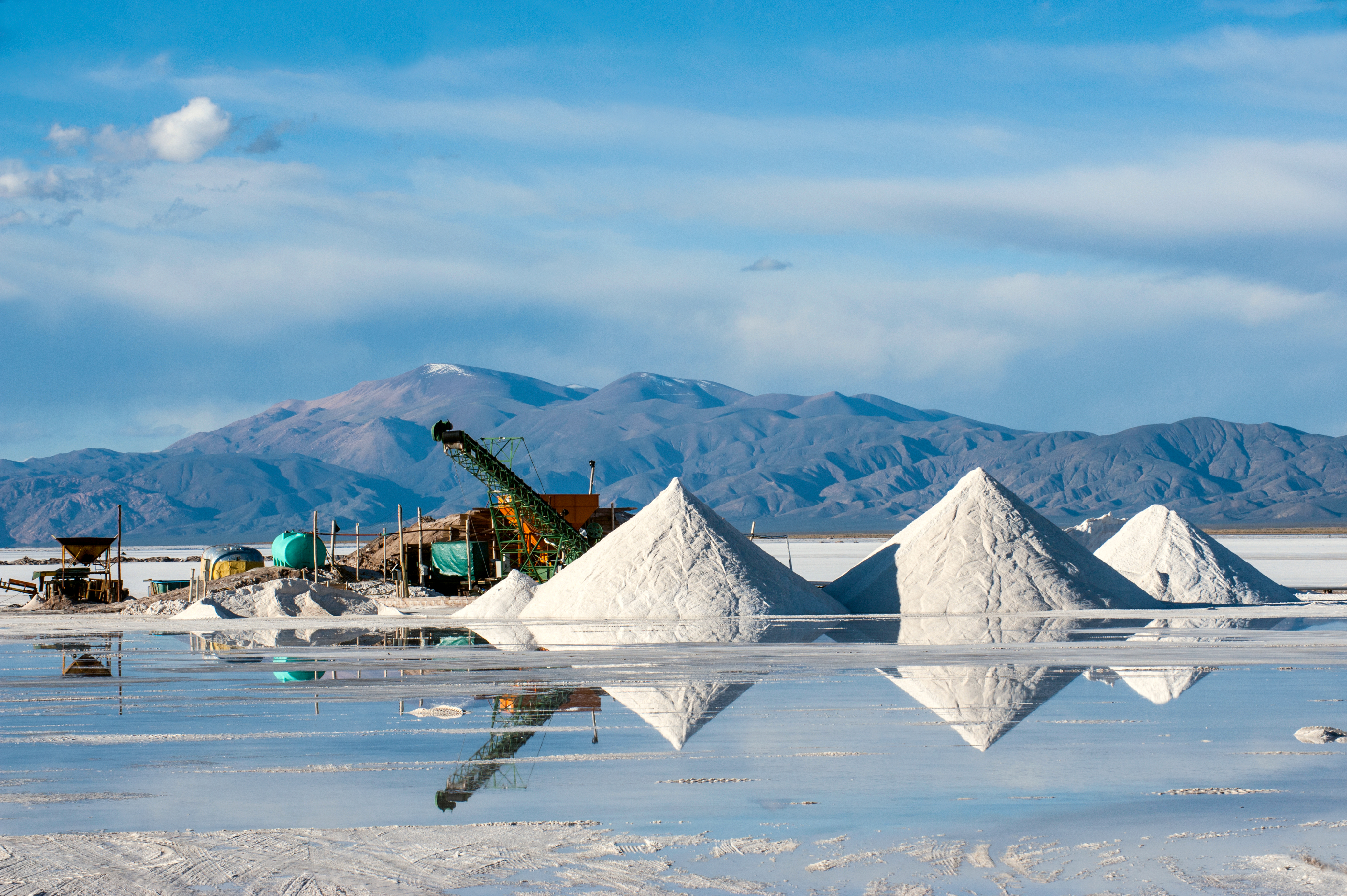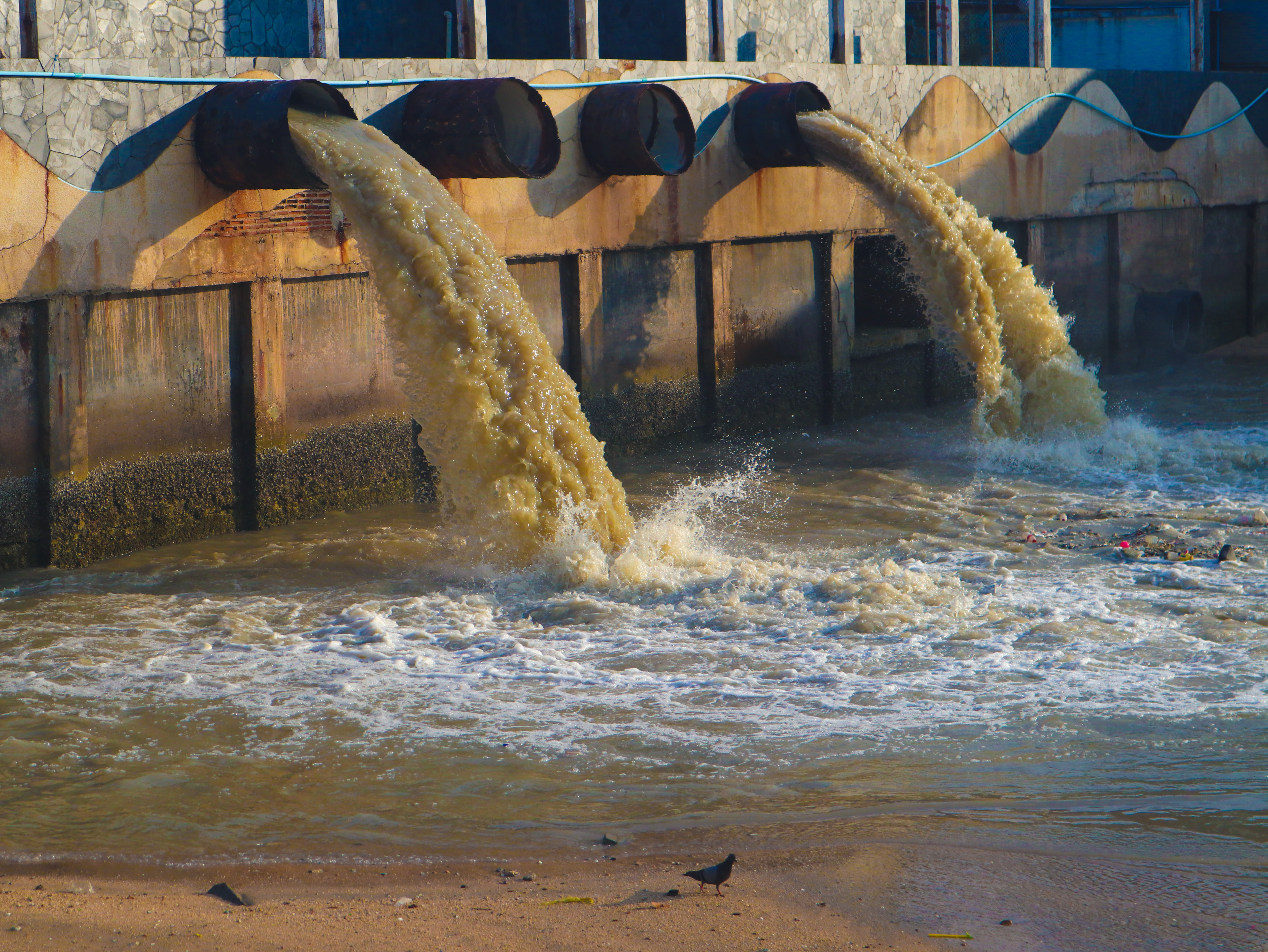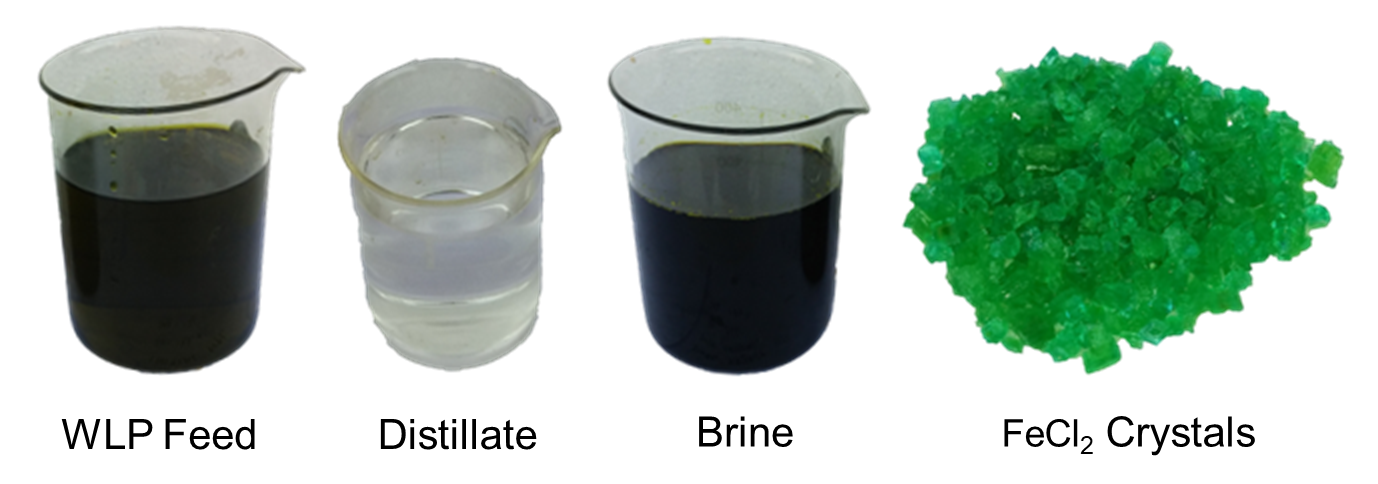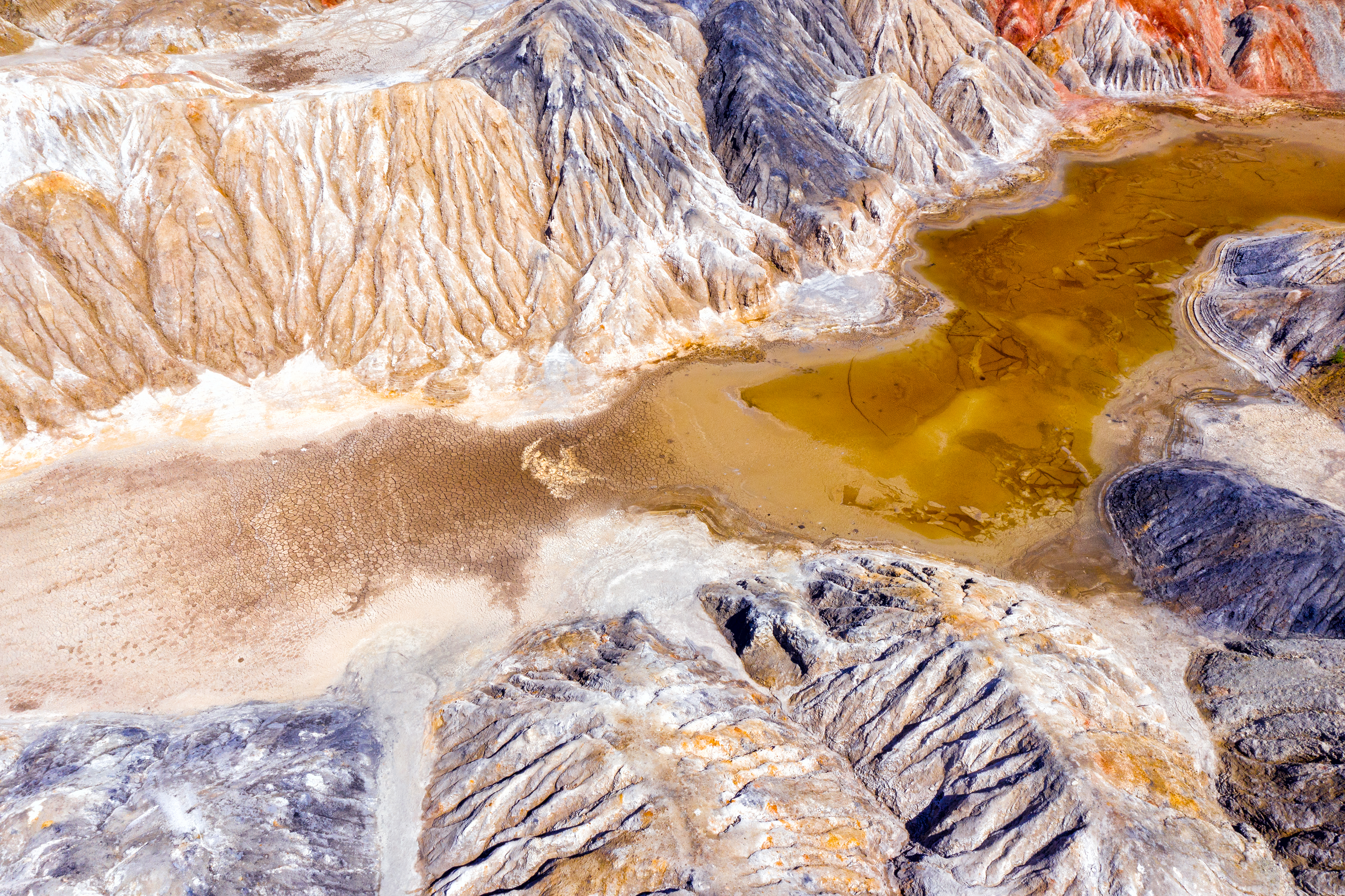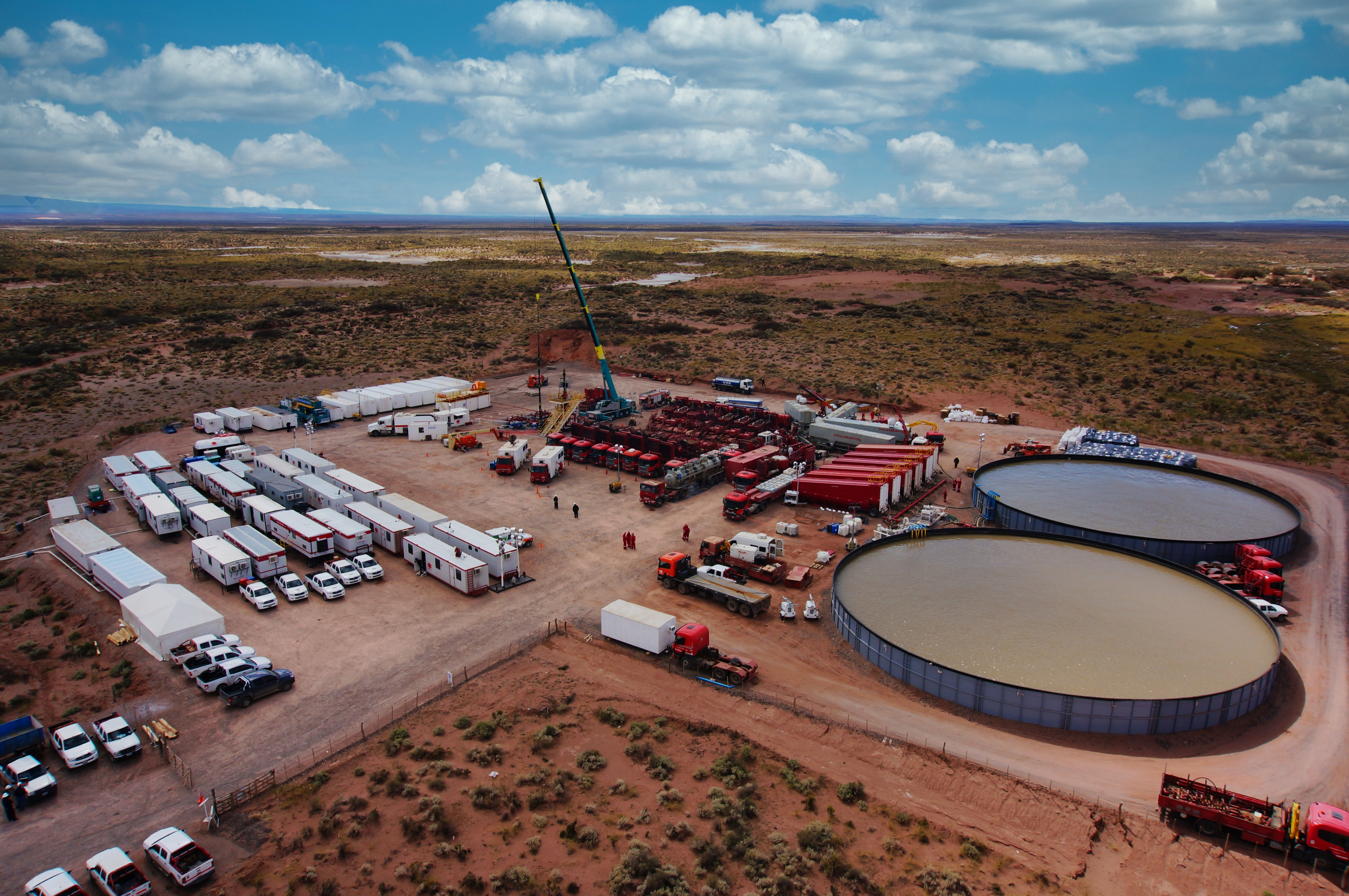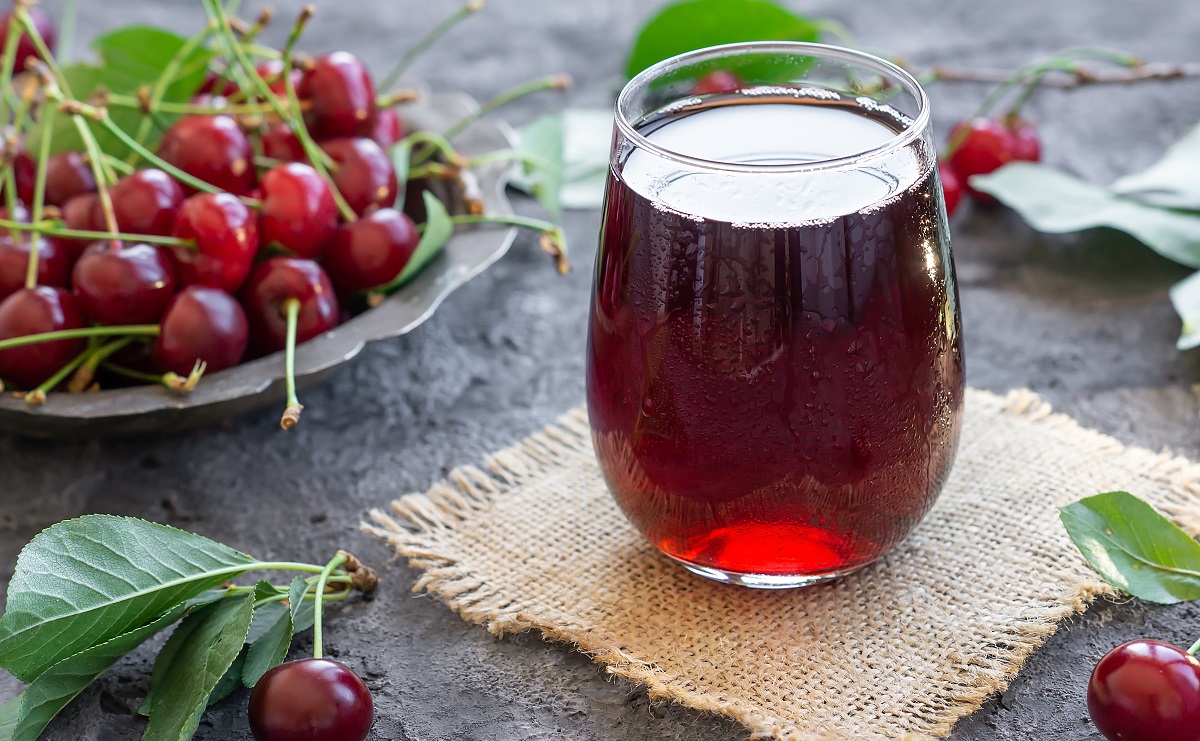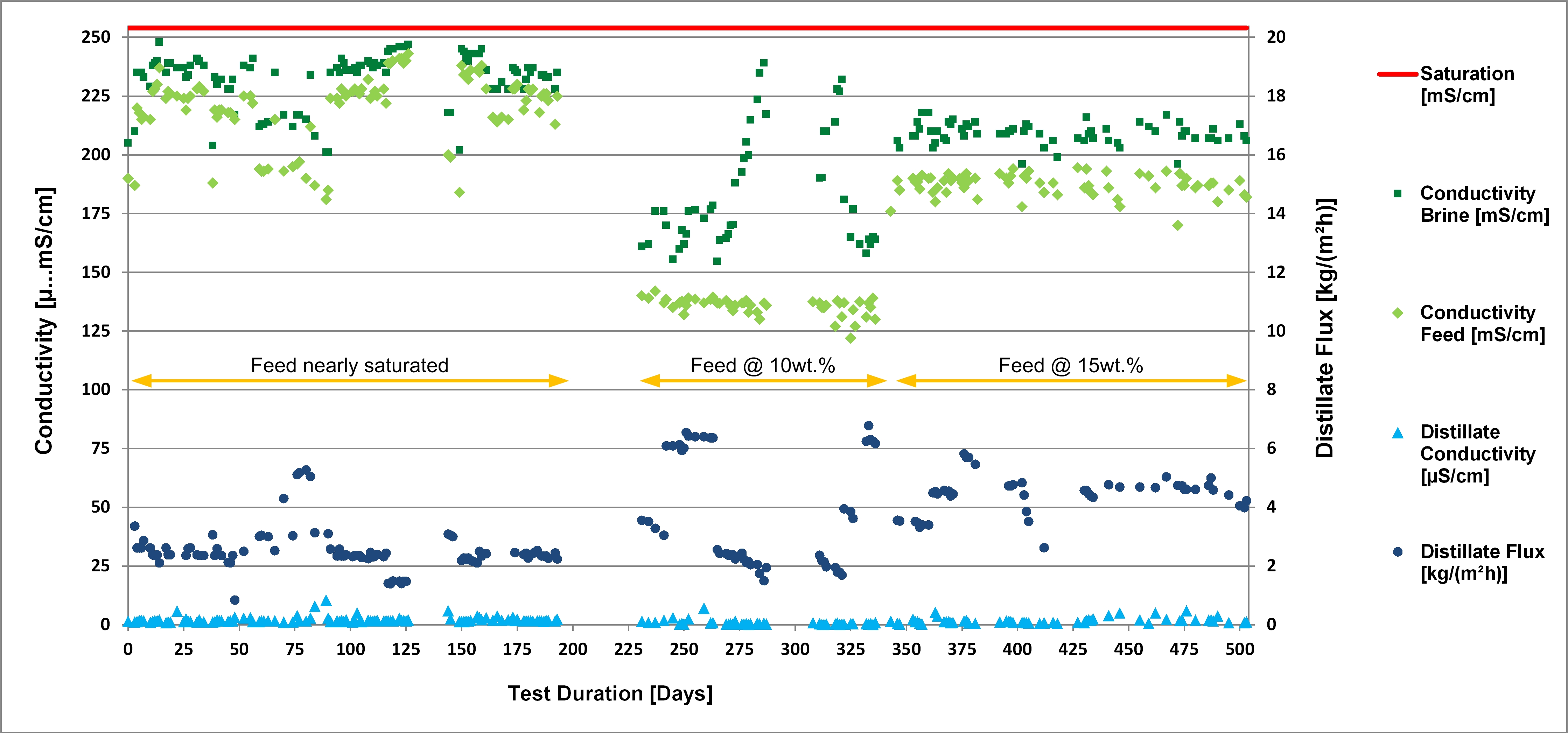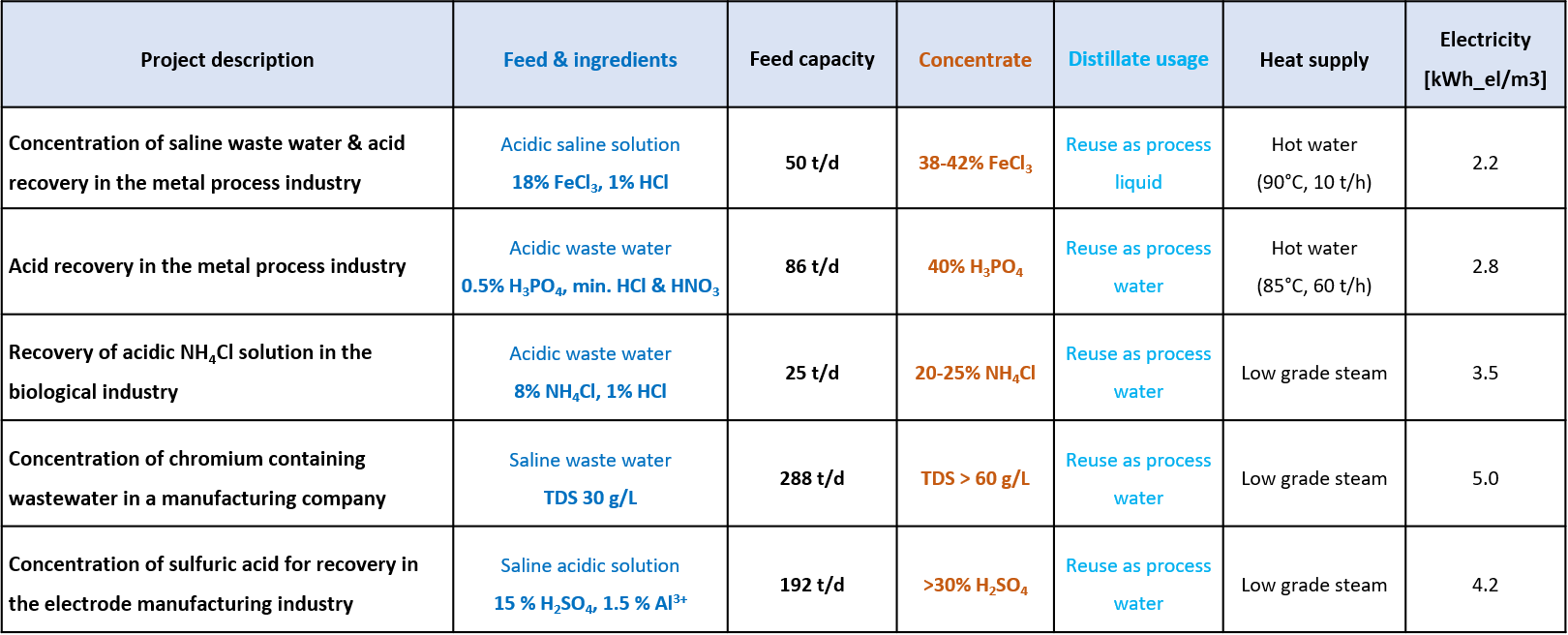Next level water mining
The VMEMD process is very powerful for the concentration of very salty and corrosive liquids. It is realized in the EvCon VMEMD modules which are made of high quality polymers. VMEMD combines the sharp and powerful separation of evaporation with a hydrophobic membrane that works as a perfect droplet catcher. The process is not limited by osmotic pressure and can concentrate salty liquids up to saturation level.
Waste water from industry or even brine from desalination plants does not have to be seen as burden any more. The VMEMD technology is able to turn saline liquids into a resource that delivers two products:

Purified water

Concentrated salt solutions
The concentration of valuable metals like magnesium or lithium is often very low in saline water. VMEMD is able to increase its concentration significantly. This opens the door to harvest it at economic conditions. Even the recovery of corrosive process liquids like acids is possible. This was proven multiple times with industrial VMEMD systems of generation I & II. EvCon provides brine concentration with systems of pilot size and at large that are equipped with modules of generation III. Follow sections show examples:
